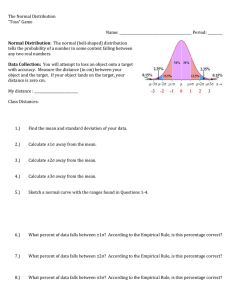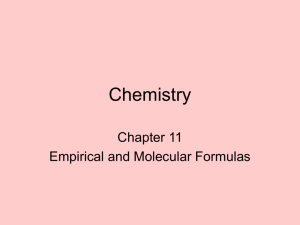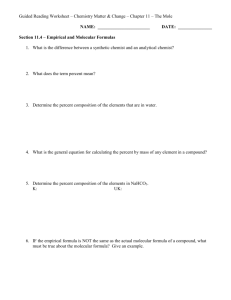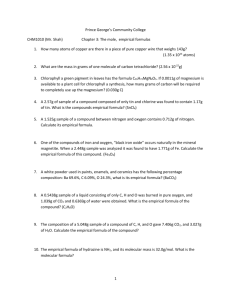6.7 E F
advertisement
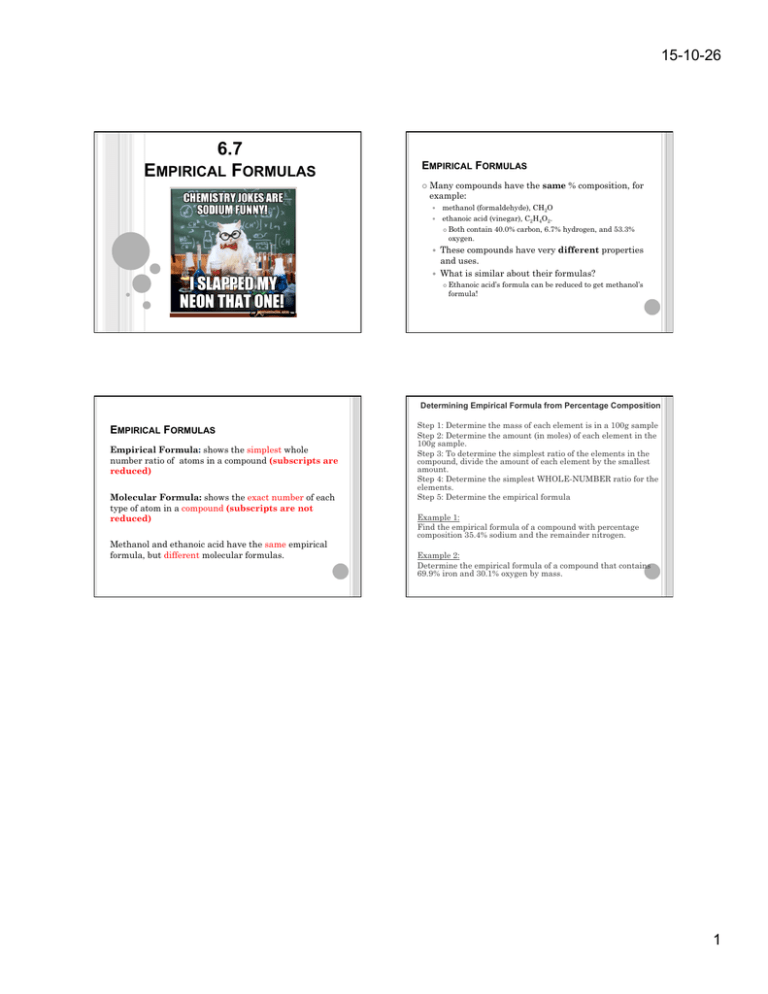
15-10-26 6.7 EMPIRICAL FORMULAS EMPIRICAL FORMULAS ¢ Many compounds have the same % composition, for example: methanol (formaldehyde), CH2O ethanoic acid (vinegar), C2H4O2. ¢ Both contain 40.0% carbon, 6.7% hydrogen, and 53.3% oxygen. These compounds have very different properties and uses. What is similar about their formulas? ¢ Ethanoic acid’s formula can be reduced to get methanol’s formula! Determining Empirical Formula from Percentage Composition EMPIRICAL FORMULAS Empirical Formula: shows the simplest whole number ratio of atoms in a compound (subscripts are reduced) Molecular Formula: shows the exact number of each type of atom in a compound (subscripts are not reduced) Methanol and ethanoic acid have the same empirical formula, but different molecular formulas. Step 1: Determine the mass of each element is in a 100g sample Step 2: Determine the amount (in moles) of each element in the 100g sample. Step 3: To determine the simplest ratio of the elements in the compound, divide the amount of each element by the smallest amount. Step 4: Determine the simplest WHOLE-NUMBER ratio for the elements. Step 5: Determine the empirical formula Example 1: Find the empirical formula of a compound with percentage composition 35.4% sodium and the remainder nitrogen. Example 2: Determine the empirical formula of a compound that contains 69.9% iron and 30.1% oxygen by mass. 1



